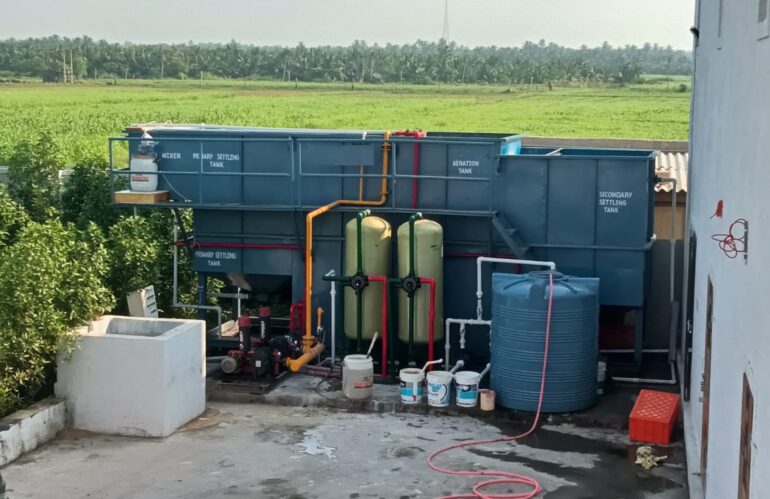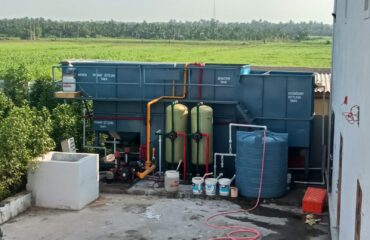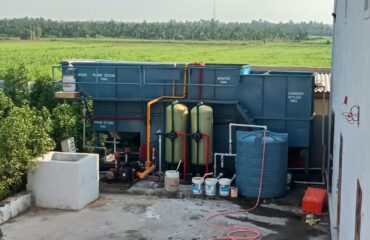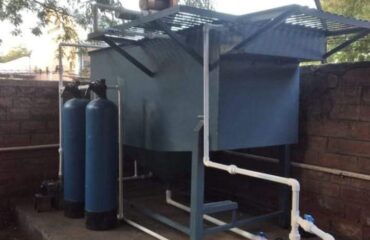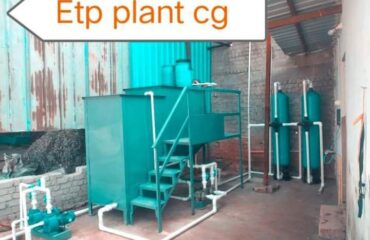Introduction
The automobile industry is a cornerstone of economic growth and technological advancement, yet it also poses significant environmental challenges. In Alwar, where the automobile sector is burgeoning, addressing industrial wastewater has become paramount. An Effluent Treatment Plant (ETP) is the solution to managing and mitigating the environmental impact of wastewater from automobile manufacturing processes. This article delves into the importance, benefits, and workings of ETPs specifically tailored for the automobile industry in Alwar.
Importance of Effluent Treatment Plant for Automobile Industry
Environmental Compliance
Automobile manufacturing involves a variety of processes such as painting, metal finishing, and parts cleaning, all of which generate wastewater laden with pollutants. Regulatory bodies like the Central Pollution Control Board (CPCB) impose stringent norms on effluent discharge. An ETP ensures compliance with these environmental regulations, helping industries avoid hefty fines and contributing to sustainable development.
Protection of Water Resources
Alwar, like many regions, faces challenges regarding water scarcity and pollution. Untreated effluent can contaminate local water bodies, affecting both aquatic life and human health. ETPs safeguard water resources by treating and removing harmful pollutants before the water is discharged back into the environment, thus preserving the quality of local water sources.
Corporate Social Responsibility (CSR)
Investing in an ETP demonstrates a company’s commitment to corporate social responsibility. By actively reducing their environmental footprint, automobile companies in Alwar can enhance their brand image, gain public trust, and establish themselves as industry leaders in sustainable practices.
Benefits of Effluent Treatment Plant
Reduction of Environmental Impact
An ETP reduces the environmental impact of industrial activities by effectively removing contaminants such as heavy metals, oils, grease, and chemicals from wastewater. This reduction in pollutants helps in protecting ecosystems and maintaining biodiversity in the surrounding areas.
Cost Savings and Resource Recovery
While the initial investment in an ETP might be significant, the long-term cost savings are substantial. Treated water can be reused within the manufacturing process, reducing the demand for fresh water and lowering operational costs. Additionally, resource recovery techniques within ETPs can reclaim valuable by-products such as metals and chemicals, which can be reused or sold, adding a revenue stream.
Enhanced Operational Efficiency
Modern ETPs are designed to integrate seamlessly with the existing manufacturing infrastructure, enhancing overall operational efficiency. Automated monitoring and control systems ensure optimal performance, reducing downtime and maintenance costs. This leads to improved productivity and cost-effectiveness for automobile manufacturers.
Health and Safety Improvements
By treating industrial wastewater, ETPs also contribute to a safer and healthier workplace. Reduced exposure to harmful chemicals and pollutants protects workers’ health, reducing medical expenses and improving morale and productivity. Ensuring a safe working environment is crucial for maintaining a committed and efficient workforce.
How Effluent Treatment Plants Work
Primary Treatment
The primary stage involves physical separation of large solids and particles from the wastewater. This is achieved through processes such as screening, sedimentation, and flotation. These methods help in reducing the load on subsequent treatment stages by removing easily separable contaminants.
Secondary Treatment
Secondary treatment focuses on biological processes to degrade organic matter in the effluent. This stage utilizes aerobic or anaerobic microorganisms to break down organic pollutants, transforming them into harmless substances. Techniques like activated sludge processes, biofilters, and membrane bioreactors are commonly employed in this stage.
Tertiary Treatment
The tertiary stage provides a final polish to the treated water, removing any remaining impurities to achieve desired discharge standards. This stage often involves advanced filtration and disinfection methods such as sand filters, carbon adsorption, reverse osmosis, and ultraviolet (UV) treatment. Tertiary treatment ensures that the effluent is free from pathogens and meets stringent quality standards.
Sludge Management
Effluent treatment generates sludge, which needs to be managed effectively to prevent secondary pollution. Sludge treatment involves thickening, digestion, dewatering, and disposal. Advanced techniques like incineration, composting, and land application are used to manage and recycle sludge sustainably.
Conclusion
In conclusion, the implementation of Effluent Treatment Plants in the automobile industry in Alwar is not only a regulatory necessity but also an environmental and economic imperative. ETPs play a crucial role in ensuring compliance with environmental regulations, protecting water resources, and enhancing corporate social responsibility. The numerous benefits, including reduced environmental impact, cost savings, operational efficiency, and health improvements, underscore the importance of ETPs for the sustainable growth of the automobile sector in Alwar.
Automobile companies in Alwar must prioritize the installation and maintenance of efficient ETPs to lead the way in sustainable manufacturing practices. By doing so, they can significantly contribute to the preservation of the environment, promote public health, and secure their position as responsible and forward-thinking industry leaders.
